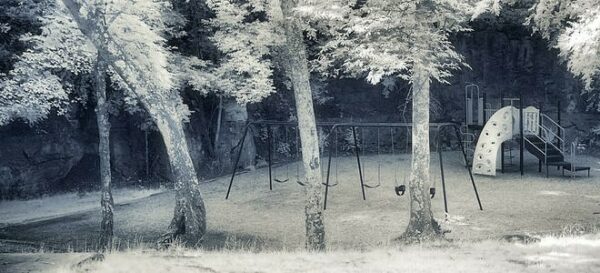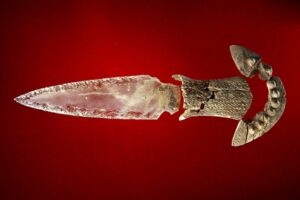Arheologi, ki so izkopavali podvodno metropolo Thônis-Heracleion v egiptovskem pristanišču Abū Qīr, so izkopali pletene košare s sadjem iz četrtega stoletja pred našim štetjem.
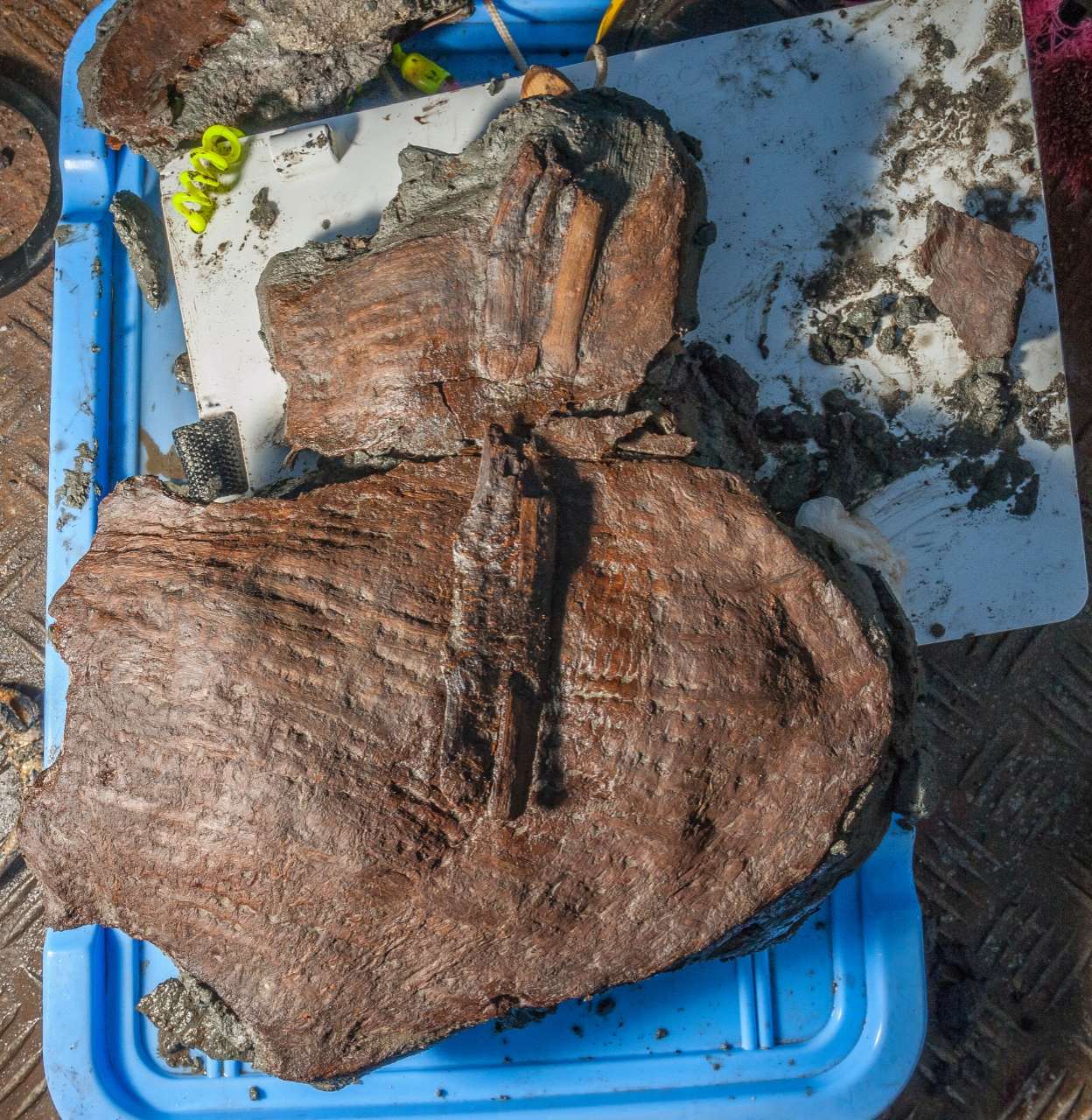
Presenetljivo je, da kozarci še vedno vsebujejo oreščke in grozdne pečke, sadež afriške palme, ki so ga stari Egipčani imeli za svetega.
"Nič ni bilo moteno," je za Dalyo Alberge iz Guardiana povedal morski arheolog Franck Goddio. "Zelo osupljivo je bilo videti košare s sadjem."
Goddio in njegovi kolegi na Evropskem inštitutu za podvodno arheologijo (IEASM) so posode odkrili v sodelovanju z egiptovskim ministrstvom za turizem in starine. Raziskovalci raziskujejo starodavno sredozemsko pristaniško mesto Thônis-Heracleion od njegovega ponovnega odkritja leta 2001, poroča Egypt Independent.
Košare so bile shranjene v podzemni sobi in so morda bile pogrebne daritve, poroča Greek City Times. V bližini so raziskovalci našli 197 krat 26 čevljev velik tumulus ali grobnico in ekstravagantno paleto grškega pogrebnega blaga, ki so ga verjetno pustili trgovci in plačanci, ki živijo na tem območju.
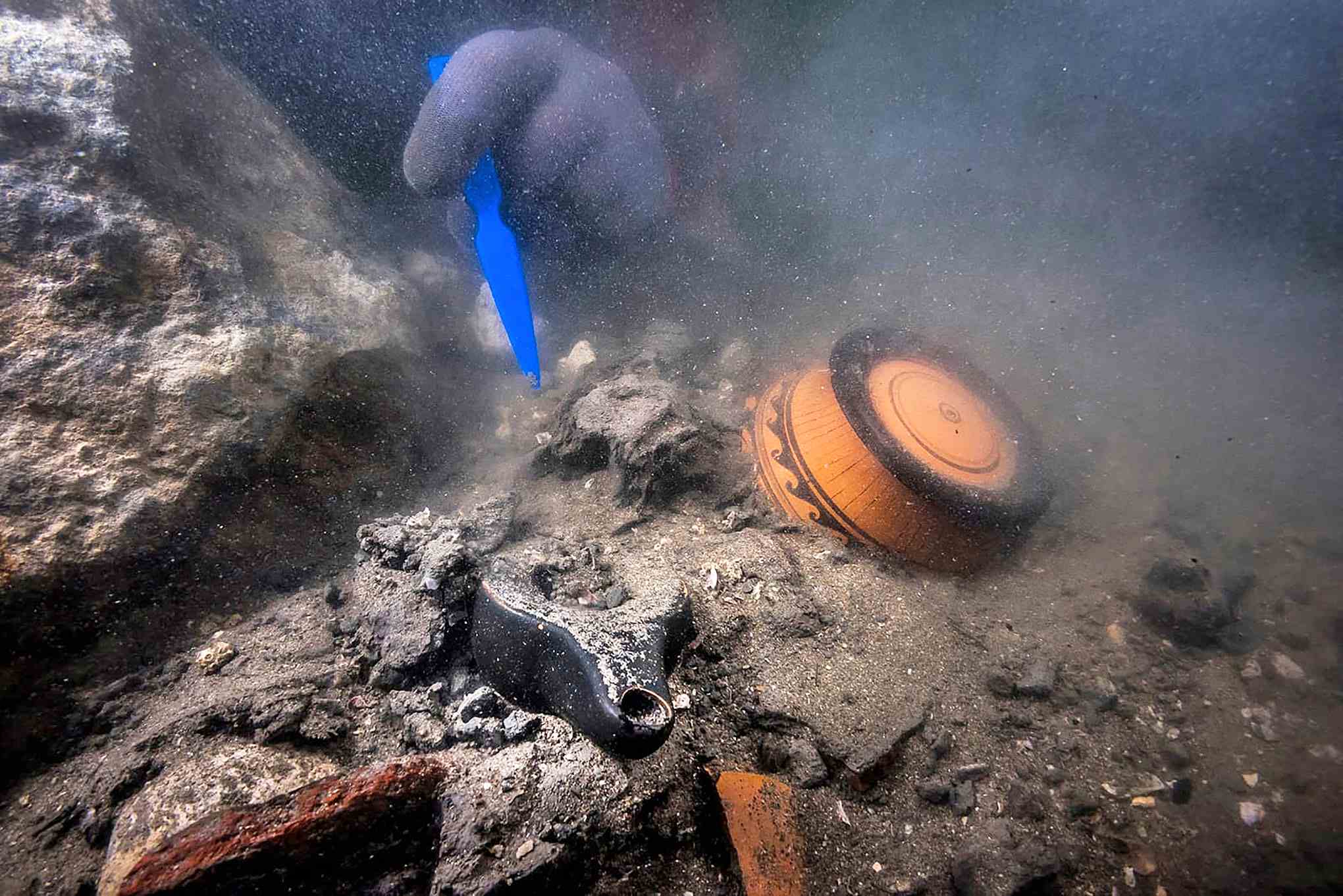
"Povsod smo našli dokaze o zažganem materialu," pravi Goddio v izjavi, ki jo citira Radina Gigova s CNN. »Tam so zagotovo potekale spektakularne slovesnosti. Kraj je moral biti zapečaten več sto let, saj nismo našli predmetov iz poznejšega četrtega stoletja pred našim štetjem, čeprav je mesto živelo še nekaj sto let po tem.«
Drugi predmeti, najdeni na grobu ali okoli njega, so vključevali starodavno keramiko, bronaste artefakte in figurice, ki prikazujejo egipčanskega boga Ozirisa.
»Našli smo na stotine usedlin iz keramike,« je Goddio povedal za Guardian. »Eden nad drugim. To so uvožene keramike, rdeče na črnih figurah.«
Thônis-Heracleion je bil ustanovljen v devetem stoletju pr. n. št. Pred ustanovitvijo Aleksandrije okoli leta 331 pr. n. št. je mesto delovalo kot »obvezno pristanišče vstopa v Egipt za vse ladje, ki so prihajale iz grškega sveta,« piše na Goddiojevi spletni strani.
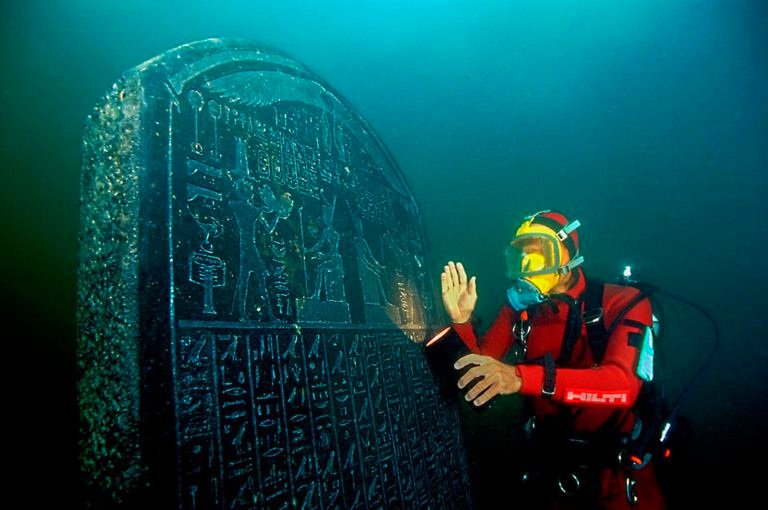
Cvetoče trgovsko središče je doseglo vrhunec med šestim in četrtim stoletjem pr. n. št. Strukture, ki se raztezajo iz osrednjega templja, z vodnimi potmi, ki povezujejo različne dele mesta. Hiše in druge verske zgradbe so stale na otokih v bližini Thônis-Heracleiona
Mesto, ki je bilo nekoč epicenter pomorske trgovine, se je v osmem stoletju našega štetja potopilo v Sredozemlje. Nekateri zgodovinarji propad metropole pripisujejo dvigovanju morske gladine in propadajočim, nestabilnim sedimentom, kot je Reg Little zapisal za Oxford Mail leta 2022. Drugi trdijo, da so potresi in plimni valovi povzročili, da se je 42 kvadratnih milj velik del delte Nila zrušil v morje, poroča CNN.
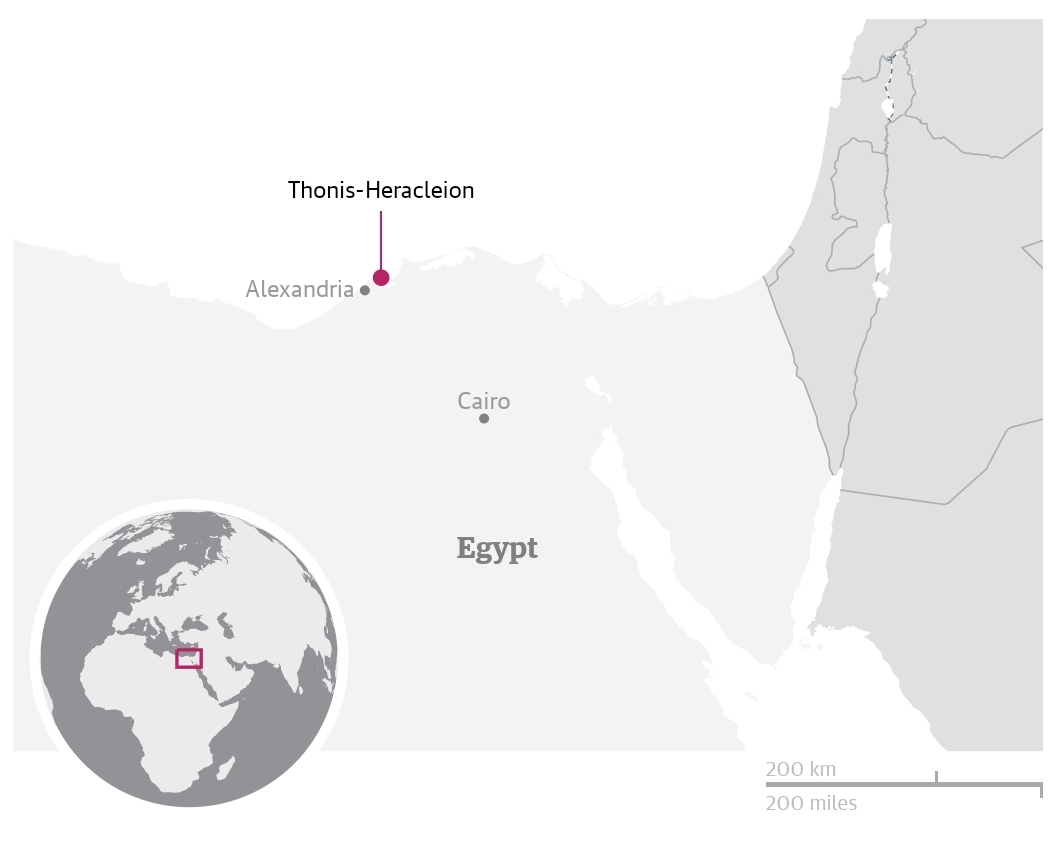
Kot je leta 2022 poročala Emily Sharpe iz Art Newspaperja, so strokovnjaki nekoč mislili, da je bil Heracleion, ki ga omenja grški zgodovinar Herodot v petem stoletju pred našim štetjem, ločeno mesto od Thônisa, kar je egiptovsko ime mesta. Tablica, ki jo je Goddiova ekipa našla leta 2001, je raziskovalcem pomagala sklepati, da sta bili lokaciji isti.
Vrnitev predmetov iz ruševin Thônis-Heracleiona je naporna naloga zaradi plasti zaščitnega sedimenta, ki jih prekriva.
"Cilj je, da se iz naših izkopavanj naučimo čim več, ne da bi bili vsiljivi," je Goddio leta 2022 povedal za Art Newspaper.
Po poročanju časnika Oxford Mail druge najdbe v Thônis-Heracleionu vključujejo več kot 700 starinskih sider, zlatnike in uteži ter množico majhnih apnenčastih sarkofagov s kostmi mumificiranih živali. Arheologi so prejšnji mesec v ločenem delu mesta odkrili dobro ohranjeno vojaško plovilo iz drugega stoletja pred našim štetjem.
Po mnenju strokovnjakov naj bi v prihodnosti na tem mestu odkrili še več predmetov. Goddio je za Guardian povedal, da so v 3 letih po ponovnem odkritju raziskali le 20 % pokopane metropole.

